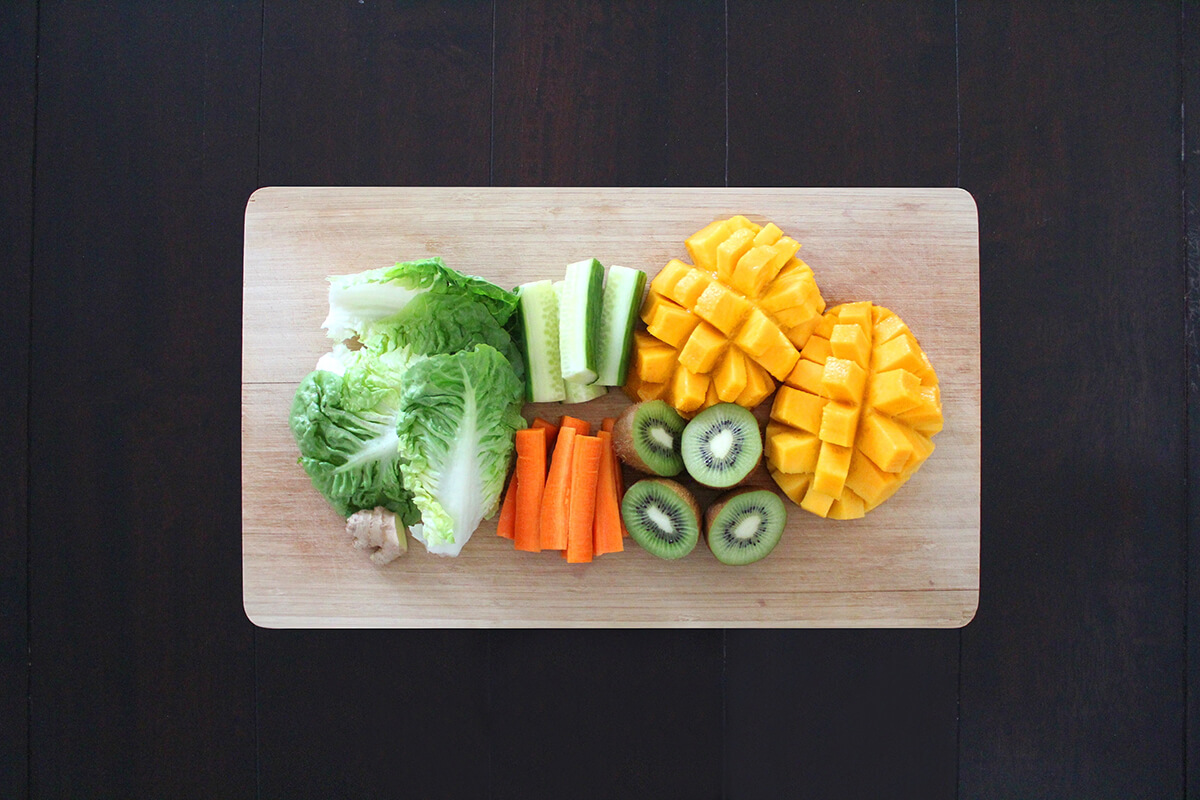Ask anyone knowledgeable in nutrition about the benefits of fiber and the positives will trump over the negatives. People claim this type of carbohydrate will help you reduce your risk of certain cancers, lower your type 2 diabetes risk, and help with weight loss as it supposedly reduces appetite and increase satiety. In other words, fiber is magic and should be given the same amount of adoration that we shower antioxidants and the rest of the nutritional superstars with.
Yet when was the last time you fact-checked fiber’s benefits? What if we dig deeper into recent nutrition research to learn more?
In this article, we’ll put fiber in the limelight and sort myths from facts. While mainstream beliefs will tell you that adding lots of fiber to your daily diet is key to good health, let’s figure out if this advice is scientifically sound, especially when it comes to sustainable weight loss and improving your body composition.
Know Thy Fiber

Before we dive into separating myths from established facts and findings, let’s cover the basics.
Dietary fiber, sometimes referred to as roughage, refers to a broad, diverse group of carbohydrates that we, as humans, cannot digest because we are lacking in digestive enzymes to break them down. For this reason, roughage ends up in your colon unchanged.
So why would something that humans can’t digest turn out to be beneficial part of your diet?
Fibers are inherently unique from each other due to their chemical properties. That’s right, the fiber you find brown rice is different than the kind you find in oats. Scientists categorize dietary fibers based on a specific set of characteristics.
To have a better understanding as to how fiber can possibly impact your body composition and overall health, let’s take a closer look at this indigestible carbohydrate through the lens of its popular methods of classification: solubility, viscosity, and fermentability, and a special note on resistant starch.
Soluble and Insoluble Fiber
irst of all, all plant-based foods are generally a mix of both soluble and insoluble fibers. Think of the soluble fiber as the dawdling sibling while the insoluble type is the speedster in the family. How come?
Soluble fiber dissolves in water and morphs into a gel-like substance when it passes through the gut. Foods high in soluble fiber include apples, beans, blueberries, lentils, nuts, and oat products.
Insoluble fiber doesn’t dissolve in water and the term roughage generally refers to this specific type. Unlike its slow solubility sister, roughage does the exact opposite. It speeds up transit time in the digestive system and adds bulk to your stool. This is the basis of the most common health recommendation for eating more roughage: to prevent constipation by helping food move through your system.
Foods high in insoluble fiber include brown rice, carrots, cucumbers, tomatoes, wheat, whole wheat bread, and whole grain couscous.
Contrary to popular belief, solubility does not reliably predict whether or not a certain type of fiber is beneficial to your health. However, the terms soluble and insoluble are still used by many nutrition and healthcare professionals including the US Food and Drug Administration (FDA) in nutritional labels.
Viscous and Nonviscous Fiber

Another way of classifying fiber is through its viscosity. Certain types of soluble fiber are more viscous, or more likely to form firmer, stickier gels when mixed with water than other types. When you digest food with high-viscous fiber in it, it increases the viscosity of the gel-like substance that passes through your gut. As a result, it reduces your appetite because you feel fuller longer.
Viscous fibers include the following:
- pectins (abundant in berries and fruits)
- β-Glucans (Beta-glucans: abundant in barley and oats)
- guar gum (commonly derived from the Indian cluster bean)
- psyllium (isolated from psyllium seed husks)
The most frequently cited benefits of fiber (e.g., reduce cholesterol levels, improve glycemic control in type 2 diabetes, improve stool form in both constipation and diarrhea) is directly correlated to its viscosity. Nonviscous food sources tend not to have these beneficial properties. This is incredibly important because the general public tend to lump all types of fiber as one and associate its health benefits to all types too. Until more is known about the beneficial effects of low-viscosity fibers, a good strategy is to learn toward foods higher in viscosity.
Fermentable and Nonfermentable Fiber
If you’re not aware yet, your entire body is host to trillions (yes, trillions!) of beneficial bacteria. The majority live in your intestines and are referred to as your gut microbiome. Also known as the forgotten organ, these little creatures have a say in your body composition and overall health.
The beneficial bacteria in your gut thrive on fermentable fiber. Not to mention that this wonderful alchemy of fermentation in your gut produces short-chain fatty acids such as acetate, propionate, and butyrate that suppress gut inflammation and can possibly reduce your risk of various digestive disorders like irritable bowel syndrome, crohn’s disease and ulcerative colitis.
Majority of fermentable fibers are soluble, but some insoluble fibers are cool with fermentation too. Foods that are rich in fermentable fibers include oats and barley, as well as fruit and vegetables. Cereal fibers that are rich in cellulose (like wheat bran) are nonfermentable.
Special Note on Resistant Starch

Lately, many experts have been encouraging people to add resistant starch to your diet because of its powerful health benefits.
Resistant starch is not exactly a fiber, but another form of carbohydrate (long form of glucose molecules really) that functions like soluble and fermentable fiber. Like fiber, Resistant starch is not fully broken down and absorbed in your small intestine and gut bacteria thrive on it. When fermented, resistant starch produces short-chain fatty acids as well as gases (which in turn can lead to bloating and abdominal discomfort when eaten/taken in excess).
Great food sources of resistant starch to add to your diet include beans, various legumes, green bananas, cashews, raw oats, and cooked (and then cooled) rice/potatoes. The cooling process turns some of the digestible starches into resistant starches through a process called retrogradation.
So why differentiate all the different types of fibers? Because each types will have different effects in the digestive process and having an array of natural food sources (whole wheat, oats, brown rice, starch) in your diet can have a positive overall impact on your health by improving digestion and also feeding bacteria that work so hard to keep you healthy.
Fiber’s Claims to Fame: Legit or Not?

When we talk about fiber and its impact on one’s health, we are often told about the following benefits:
- Lowers down blood sugar levels
- Reduces cholesterol levels
- Prevents chronic constipation
- Reduces the risk of specific cancers such as colon cancer and breast cancer
- Help with weight loss and improve weight control
The American Dietetic Association recommends 14g of dietary fiber per 1,000 kcal of food intake or roughly 25g for adult women and 38g for adult men. Food variety in your diet is encouraged to meet one’s daily fiber requirement. Mix it up with whole wheat, nuts, starchy carbs, and vegetables.
Like so much of nutrition, what’s true today may not be true anymore in the next three, five, or ten years. Research findings and conclusions that once seemed valid and well-founded may be revised— or even totally flipped— as new research is completed. The idea that fat doesn’t actually make you fat is a good example.
With that said, let’s figure out the recent science-backed truths of the aforementioned benefits.
Does fiber help in reducing blood sugar and cholesterol levels?
In terms of fiber’s ability to reduce blood sugar and cholesterol levels, a review of studies on the subject published in the Journal of the Academy of Nutrition and Dietetics last February revealed the following:
“…high viscosity fibers (eg, gel-forming fibers such as b-glucan, psyllium, and raw guar gum) exhibit a significant effect on cholesterol lowering and improved glycemic control, whereas non-viscous soluble fibers (eg, inulin, fructooligosaccharides, and wheat dextrin) and insoluble fibers (eg, wheat bran) do not provide these viscosity-dependent health benefits…”
With this information, we can see that not all fibers are created equal. If lowering your serum LDL cholesterol and normalizing blood glucose and insulin levels is your goal, adding soluble, viscous fibers to your diet (mainly from whole food sources) would be beneficial.
Meanwhile, resistant starch can potentially lower down blood sugar levels after meals and improve insulin sensitivity. This means that your body is less likely to store excess glucose as fat. This is good news if you’re currently working to lose fat mass as a priority in improving your body composition.
The takeaway: Not all types of fiber can help control blood sugar and reduce cholesterol levels. To gain fiber’s benefits in terms of regulating blood sugar and lowering cholesterol, opt for high viscous fibers and resistant starches.
Does fiber help with chronic constipation?
How many times have you been told to add more fiber to your diet if you’re having chronic problems in maintaining regularity in your bowel movement?
It turns out that this common advice is not as true as we thought.
In fact, a 2012 study concluded that idiopathic constipation (or constipation of unknown cause) and its associated symptoms can be effectively reduced by stopping or even lowering the intake of dietary fiber.
Furthermore, the same review of studies which examined fiber’s impact on blood sugar and cholesterol recommended that not all types of fiber can help with chronic constipation. The researchers concluded that large/coarse insoluble fibers are more effective as a laxative. Soluble fermentable fibers (e.g. inulin, fructooligosaccharide, and wheat dextrin) do not provide a laxative effect, and some fibers can even be constipating (e.g. wheat dextrin and fine/smooth insoluble wheat bran particles).
The takeaway: Not all types of fiber can help with chronic constipation. Specifically, fruits and vegetables can increase stool bulk and shorten transit time. Meanwhile, fiber supplements that are effective in treating constipation include cellulose and psyllium.
Fruits and vegetables are good sources of cellulose because this type of fiber is mainly found in plant cell walls. On the other hand, psyllium is isolated from the seeds of Plantago ovata, an herb mainly grown in India. Also known as ispaghula husk, it often comes in supplement form such as granules, powder, and capsules. Psyllium is the active ingredient in Metamucil, a popular supplement to reduce constipation.
Some baked goods and fortified cereals contain this type of fiber.
An important note on this is that sufficient fluid intake is also required to maximize the stool-softening effect of increased fiber intake.
Does fiber help reduce my risk of colorectal cancer (as what most people believe)?
The surprising fact is that much of the research does not support this. Recent findings from large prospective cohort studies and clinical intervention trials do not see an association between fiber intake and the risk of colorectal cancer. In fact, a 4-year intervention trial found out that supplementation with 7.5 g/day of wheat bran had no effect on colorectal adenoma recurrence.
As for general disease prevention, it’s worth noting that observational studies that identify associations between high-fiber intakes and reductions in chronic disease risk tend to assess only fiber-rich foods rather than fiber itself. As a result, it is difficult to determine whether observed benefits are actually related to fiber or perhaps, other nutrients or antioxidants found in fiber-rich foods. Another point for eating foods that are naturally high in fiber instead of relying on fiber supplements.
Can I rely on fiber supplements to get the same benefits as fiber from whole sources?
To get the full-benefits of fiber, research reveals that fiber-rich foods trump (as always when it comes to nutrition) supplement sources. A systematic review of studies found out that most supplements do not help at all in reducing body weight.
Okay, Enough With the Science! I Just Want to Lost Weight. Can Fiber Help?

Yes. But you have to understand that fiber for weight loss doesn’t apply to all types of fiber.
As mentioned earlier in this article, some fibers are readily fermented by your gut microbiome, most of which are soluble fibers. Soluble fibers, alongside resistant starch, help promote a thriving and diverse community of gut bacteria. Collectively, they are often referred to as prebiotics (not to be confused with probiotics which are live bacteria). If Popeye thrives on spinach, your gut bacteria thrives on prebiotics!
So what do prebiotics have to do with weight loss and your body composition?
Currently, there is reasonable evidence that increased dietary prebiotic intake decreases inflammation and helps improve insulin sensitivity. It’s worth noting that both inflammation and reduced insulin sensitivity are strong drivers of weight gain and metabolic syndrome.
By feeding your gut’s friendly and health-promoting bacteria with the right type of fiber, you also reduce your risk of obesity or unwanted weight gain. As for fiber’s role in promoting satiety reducing appetite (thus the popular belief that fiber can help with weight loss), research on the subject continues to yield conflicting results.
Conclusion
In summary, fiber’s benefits are wide ranging, but they don’t all come from one food source. In the end, variety is king. Recent findings show viscous fiber types and resistant starch may be the best sources, not just in transforming body composition but also helping you improve in key biometrics like cholesterol and blood sugar levels.
Ultimately, getting more fiber in your diet from whole food sources is always better than relying on supplements. After all, nutrition is not about eating more protein, carbs, or any specific nutrient, but it’s the synergy of these nutrients that truly matters. Besides, berries and apples are more flavorful (and more appetizing!) than chewable tablets, right?
***
Kyjean Tomboc is a nurse turned freelance healthcare copywriter and UX researcher. After experimenting with going paleo and vegetarian, she realized that it all boils down to eating real food.




